Abstract
OBJECTIVE: To describe the relationships among functional health status measures (SF-12 physical and mental components summary scores), traditional measures of community health status, and social determinants of health among respondents to community health status surveys conducted in nine different communities. DATA SOURCES/STUDY SETTING: Data collected as part of comprehensive community health status assessments conducted in each of nine communities (in seven states) between 1992 and 1997. The purpose of each assessment was to gather data to plan and evaluate population health improvement initiatives. STUDY DESIGN AND DATA COLLECTION: This is an opportunistic study drawing on the universe of community health survey data collected by the authors to support local health improvement initiatives. Both community-level as well as an aggregate of individual-level measures are used in the analysis. Within each locality, survey respondents were randomly selected using a telephone-facilitated, mailed survey methodology. PRINCIPAL FINDINGS: The key variables reported here are functional health status measures (SF-12) and social determinants of health variables. SF-12 physical and mental component scales correlated with two of four traditional measures of community health status. At the aggregate level of analysis, significant relationships were found for seven of nine social determinants of health measures when compared with SF-12 component summary scores. Relationships between social determinants measures and PCS-12 and MCS-12 scores suggest both application possibilities and the need for additional analysis in order to understand the nature of those relationships. CONCLUSIONS: Physical and mental health functioning summary scores as measured by the SF-12 are useful in describing overall community health status when compared with traditional measures such as total deaths, age-adjusted mortality, or physician to population ratio. The SF-12 can also be used to measure the relationship between physical and mental health functioning (as proxies for community health status) and the social determinants of health. This analysis can help to refine our understanding of how social determinants and health status interact in a community or population as a precursor to the development of models of community or population health.
Full text
PDF

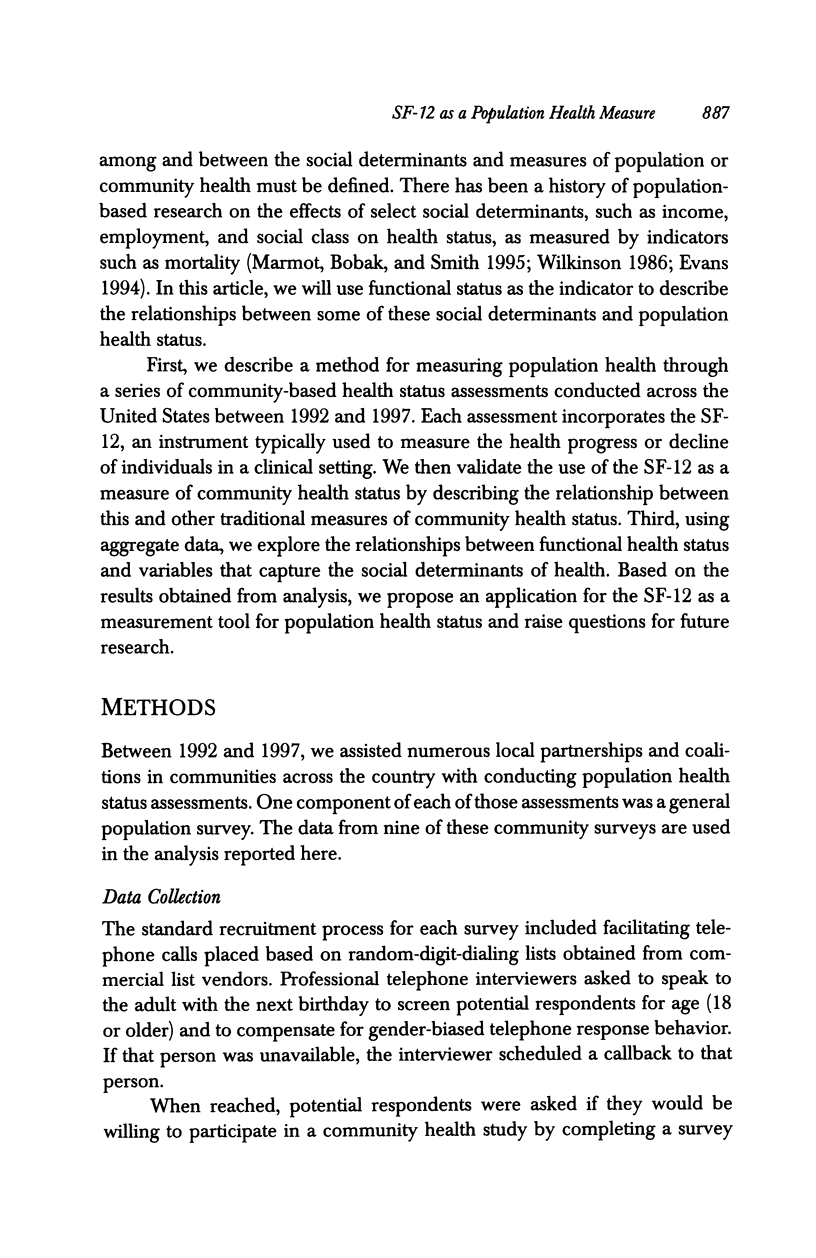




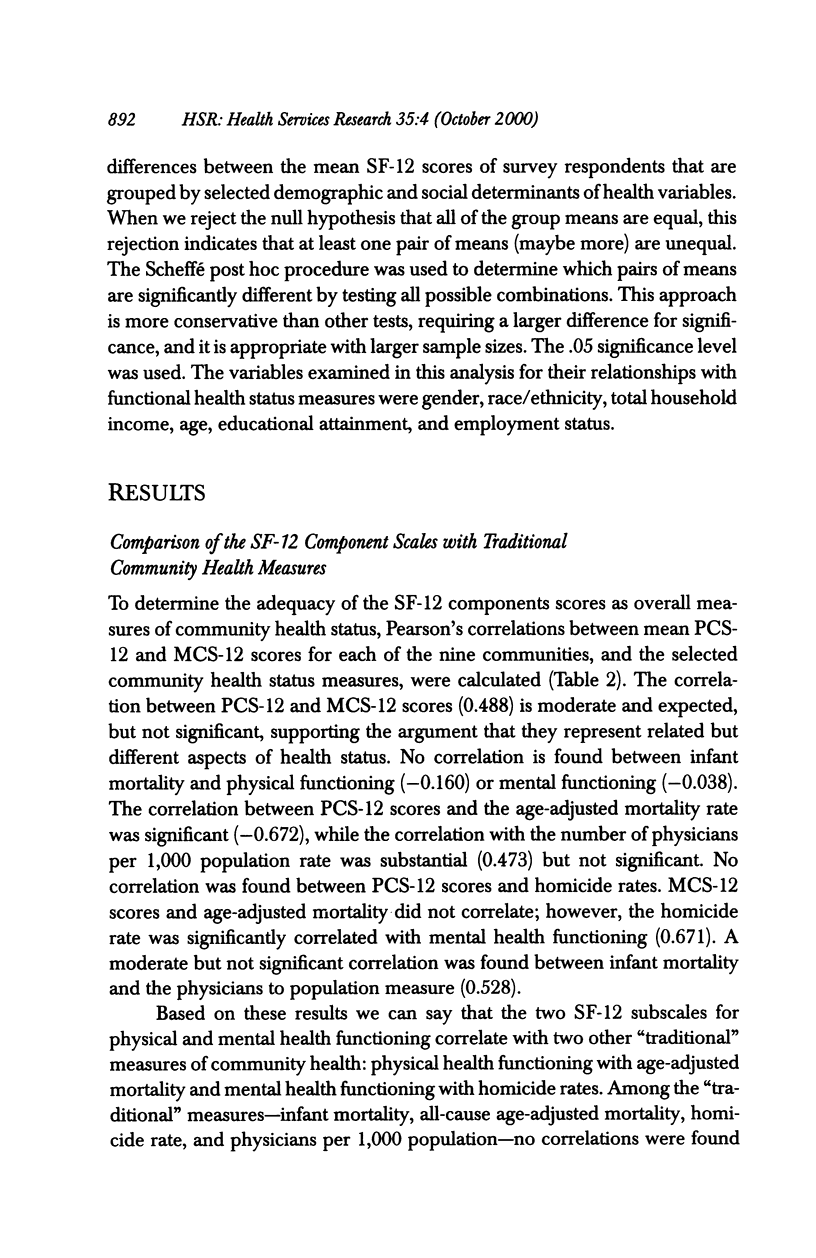


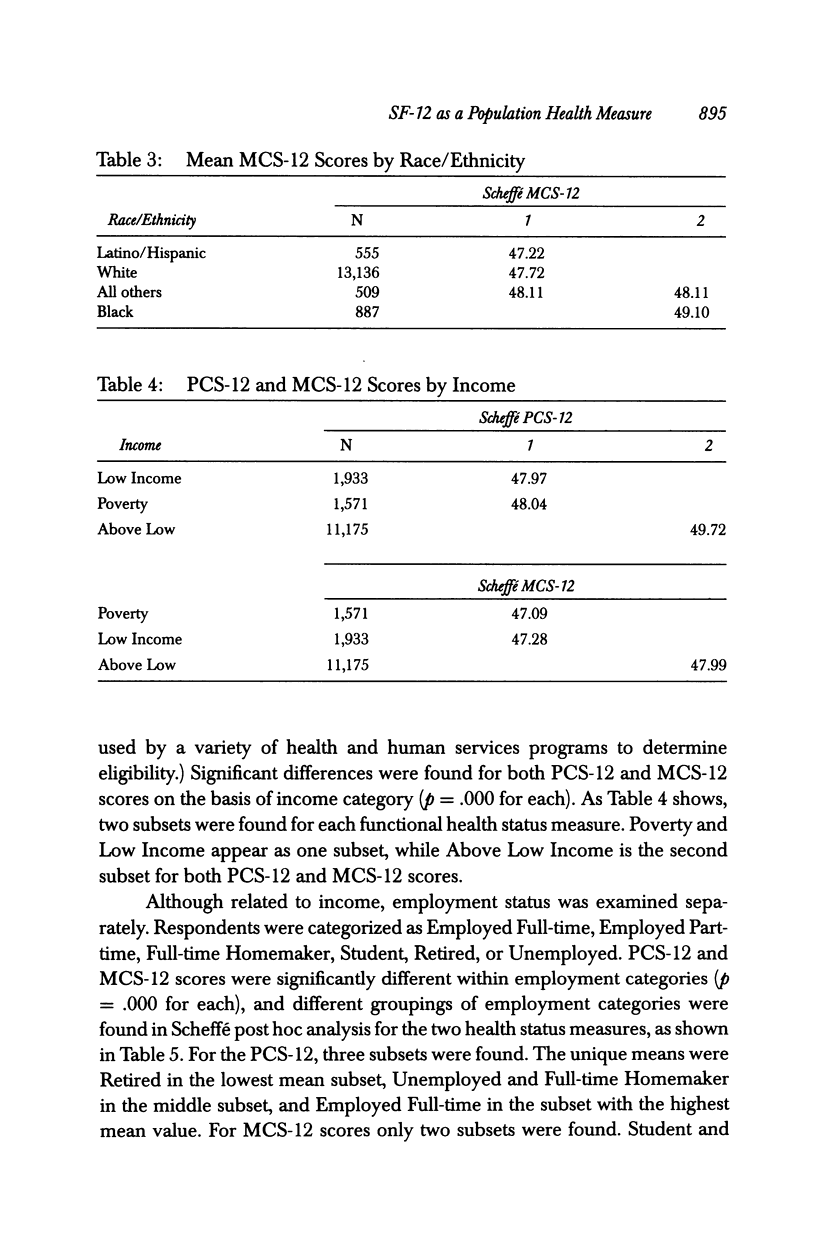

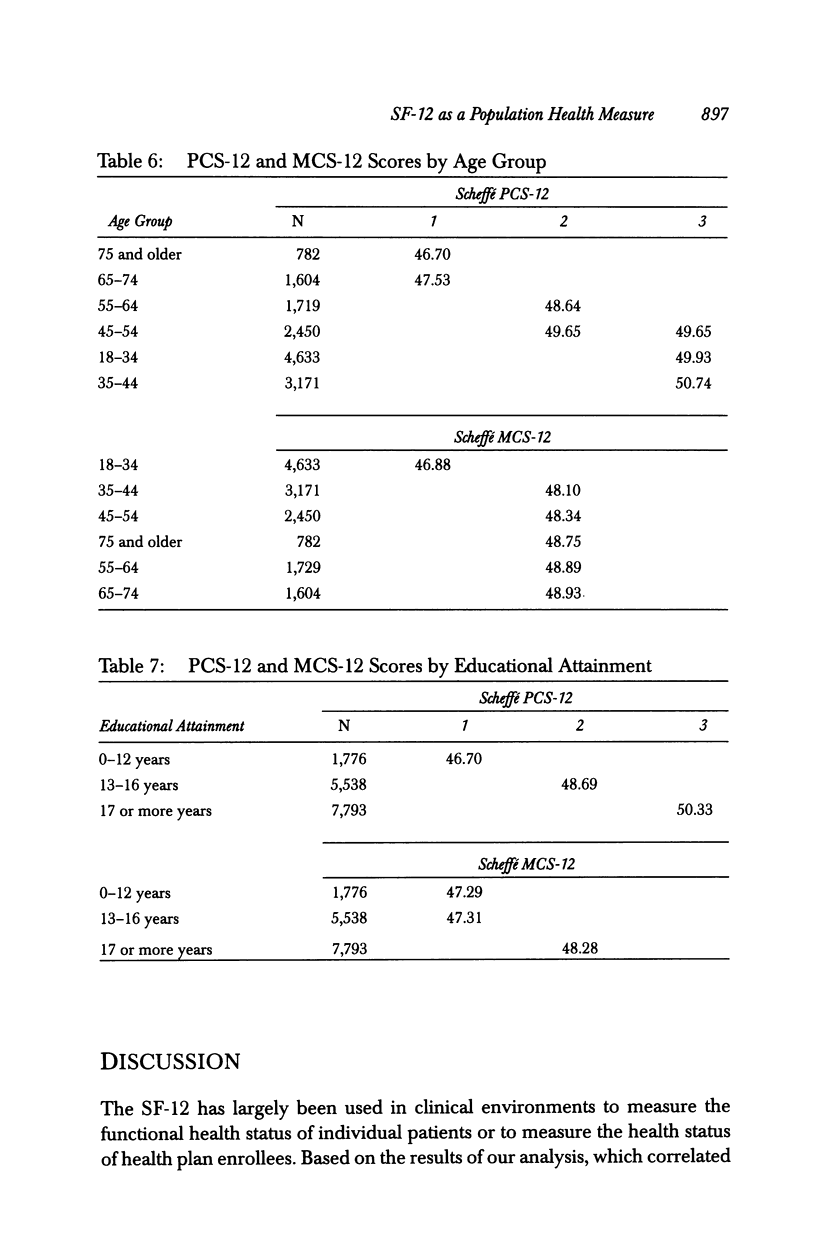
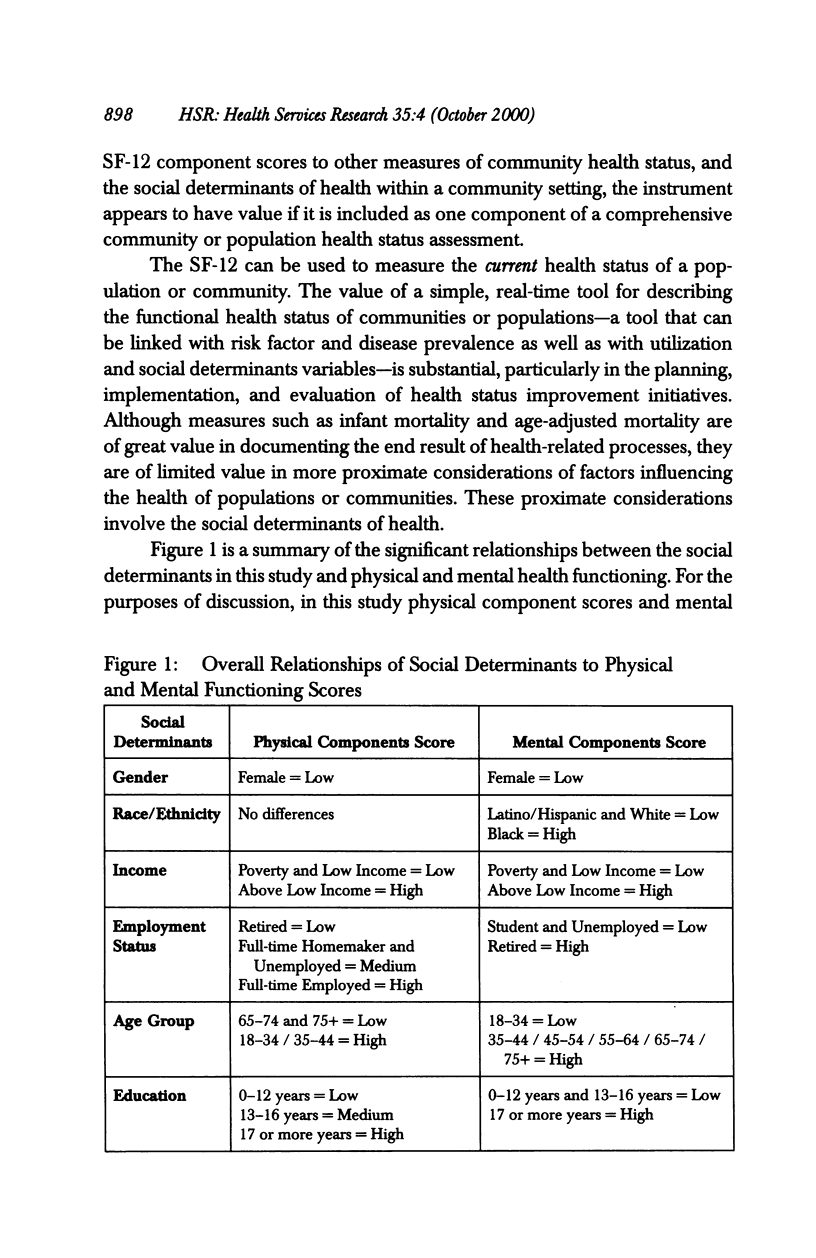


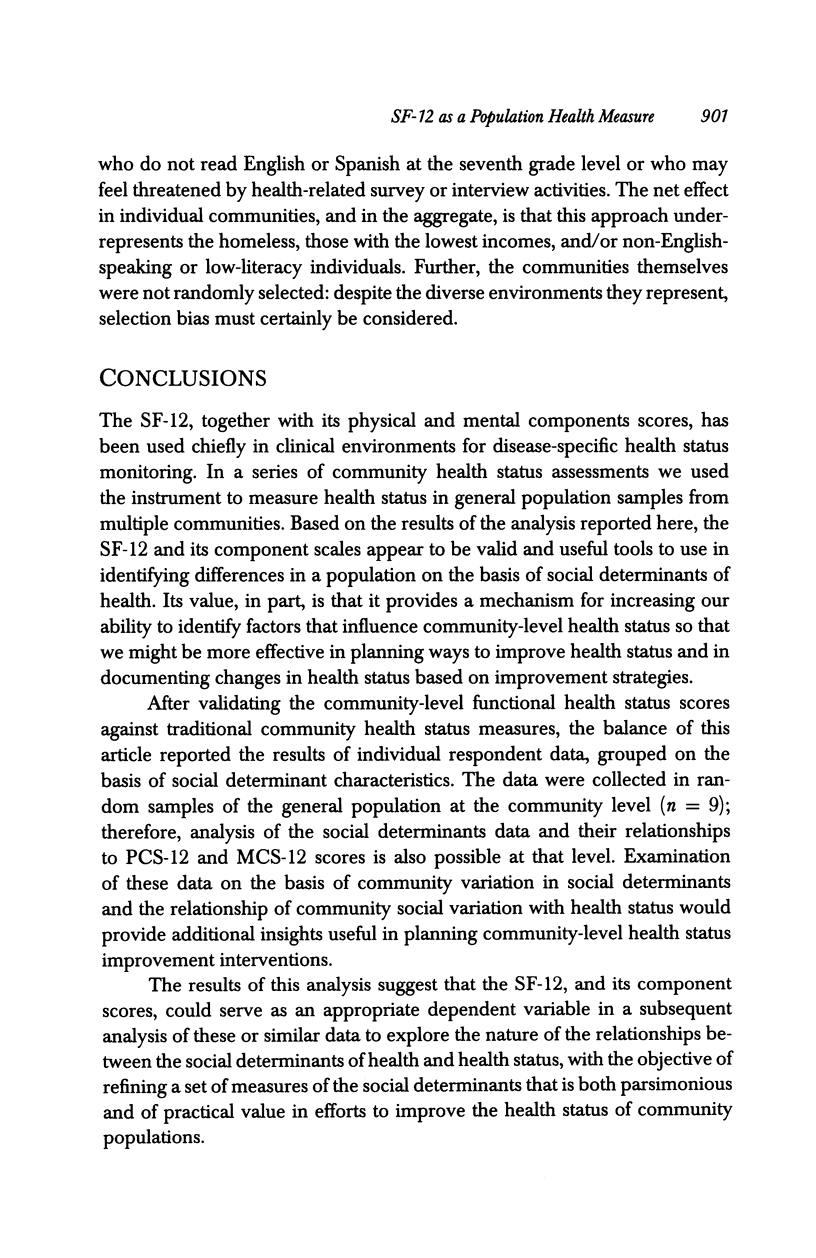



Selected References
These references are in PubMed. This may not be the complete list of references from this article.
- Cheadle A., Wagner E., Koepsell T., Kristal A., Patrick D. Environmental indicators: a tool for evaluating community-based health-promotion programs. Am J Prev Med. 1992 Nov-Dec;8(6):345–350. [PubMed] [Google Scholar]
- Gold M., Stevens B. Measuring access to care through population-based surveys in a managed care environment. Synopsis and priorities for future efforts. Health Serv Res. 1998 Aug;33(3 Pt 2):611–624. [PMC free article] [PubMed] [Google Scholar]
- Kaplan G. A., Lynch J. W. Whither studies on the socioeconomic foundations of population health? Am J Public Health. 1997 Sep;87(9):1409–1411. doi: 10.2105/ajph.87.9.1409. [DOI] [PMC free article] [PubMed] [Google Scholar]
- McHorney C. A., Kosinski M., Ware J. E., Jr Comparisons of the costs and quality of norms for the SF-36 health survey collected by mail versus telephone interview: results from a national survey. Med Care. 1994 Jun;32(6):551–567. doi: 10.1097/00005650-199406000-00002. [DOI] [PubMed] [Google Scholar]
- Steckler A., Allegrante J. P., Altman D., Brown R., Burdine J. N., Goodman R. M., Jorgensen C. Health education intervention strategies: recommendations for future research. Health Educ Q. 1995 Aug;22(3):307–328. doi: 10.1177/109019819402200305. [DOI] [PubMed] [Google Scholar]
- Tarlov A. R., Ware J. E., Jr, Greenfield S., Nelson E. C., Perrin E., Zubkoff M. The Medical Outcomes Study. An application of methods for monitoring the results of medical care. JAMA. 1989 Aug 18;262(7):925–930. doi: 10.1001/jama.262.7.925. [DOI] [PubMed] [Google Scholar]
- Ware J. E., Jr, Bayliss M. S., Rogers W. H., Kosinski M., Tarlov A. R. Differences in 4-year health outcomes for elderly and poor, chronically ill patients treated in HMO and fee-for-service systems. Results from the Medical Outcomes Study. JAMA. 1996 Oct 2;276(13):1039–1047. [PubMed] [Google Scholar]
- Williams R. M. Rx: social reconnaissance. Found News. 1990 Jul-Aug;31(4):24–29. [PubMed] [Google Scholar]


